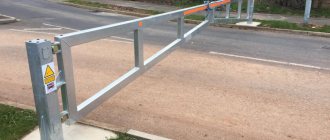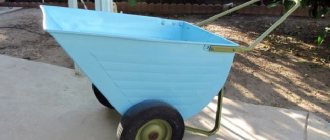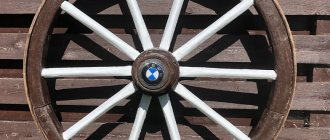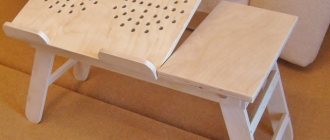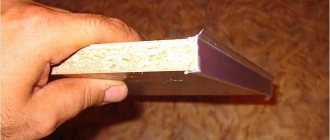Register Login
Publication date: September 13, 2019
A small mirror from a lady's cosmetic bag, reflecting the flow of sunlight, can easily light a bunch of dry grass on a clear day. This simple fun is known to many generations of citizens who spent the summer holidays outside from morning until late evening. What happens if you increase the area of the mirror? It is easy to guess that in this case the amount of captured and reflected solar energy will increase sharply. And it would be a shame not to find a worthy use for it, especially since heat prices today are growing exponentially.
Inquisitive minds who know physics quickly figured out how to construct a solar oven. Its first models easily heated food and boiled water, but could not cope with more complex tasks. The solution was to assemble a so-called parabolic reflector with a mirror inner surface. Sunlight, reflected from a curved surface and concentrated at one point, provided up to 1 kW of energy, completely free. All that was left to do was to place a cooking container at the point where the rays coincided and make sure that the surface of the parabola always looked directly at the sun. Minimum costs and high efficiency are not bad when it comes to country or camp life.
Having quickly assessed the capabilities and prospects of parabolic mirror systems, scientists were able to use them in large-scale technological processes. Today, models with a diameter of about 50 m are successfully used for processing refractory materials, the cost of processing which in an industrial environment would completely absorb the expected profit for many years to come. Huge mirror structures installed in the highlands of Europe and America provide up to 1200 W of free thermal energy, and the temperature at the point of convergence of the rays reaches 3000 ° C, simultaneously melting several hundred kilograms of metal compounds. Fast, cost-effective and free - this is exactly how a parabolic mirror works, converting the deadly energy of a hot star into useful and free heat.
How to make a parabolic mirror with your own hands
Date of publication: September 13, 2019
A small mirror from a lady's cosmetic bag, reflecting the flow of sunlight, can easily light a bunch of dry grass on a clear day. This simple fun is known to many generations of citizens who spent the summer holidays outside from morning until late evening. What happens if you increase the area of the mirror? It is easy to guess that in this case the amount of captured and reflected solar energy will increase sharply. And it would be a shame not to find a worthy use for it, especially since heat prices today are growing exponentially.
Inquisitive minds who know physics quickly figured out how to construct a solar oven. Its first models easily heated food and boiled water, but could not cope with more complex tasks. The solution was to assemble a so-called parabolic reflector with a mirror inner surface. Sunlight, reflected from a curved surface and concentrated at one point, provided up to 1 kW of energy, completely free. All that was left to do was to place a cooking container at the point where the rays coincided and make sure that the surface of the parabola always looked directly at the sun. Minimum costs and high efficiency are not bad when it comes to country or camp life.
Having quickly assessed the capabilities and prospects of parabolic mirror systems, scientists were able to use them in large-scale technological processes. Today, models with a diameter of about 50 m are successfully used for processing refractory materials, the cost of processing which in an industrial environment would completely absorb the expected profit for many years to come. Huge mirror structures installed in the highlands of Europe and America provide up to 1200 W of free thermal energy, and the temperature at the point of convergence of the rays reaches 3000 ° C, simultaneously melting several hundred kilograms of metal compounds. Fast, cost-effective and free - this is exactly how a parabolic mirror works, converting the deadly energy of a hot star into useful and free heat.
Solution
1. Determination of the Fresnel number
Since the diameters of the resonator mirrors are the same, to calculate the Fresnel number it is necessary to use formula (10) of the work:
, (26)
where a
– radius of mirrors. Substituting the values of the quantities included in formula (26), we obtain
(27)
2. Determination of loss factor
According to the condition, the total losses are mainly determined by losses due to the transmission of mirrors, losses due to inaccuracy of cavity alignment, and diffraction losses. Each type of loss has its own loss coefficient. Therefore, the total loss coefficient will be the sum of these coefficients:
(28)
To calculate the first term in (28), you can use formula (4), the second - formula (5), and the third - formula (6) of the work. Then
(29)
Substituting the values of the corresponding quantities into (29), we obtain ( a = 0.4 cm)
(30)
3. Determination of the quality factor of the resonator
It is known that the quality factor of a resonator is determined by the amount of loss of radiation propagating inside it. Since it is necessary to determine the quality factor for the main transverse mode, the total loss coefficient calculated above (30) can be used for this. In this case, according to the work, the quality factor can be written by formula (26)
. (31)
Substituting the values of the corresponding quantities into (31), we obtain
(32)
The lifetime of a photon in the main transverse mode of the cavity can be easily determined from formula (25) of the work:
, (33)
where is the central frequency of this mode, is its wavelength, s
— speed of light in vacuum.
From (33) it follows .
(34) The width of the resonance curve describing the shape of the spectral line of the resonator at the frequency of the fundamental transverse mode can be calculated from formula (37) of the work:
(35)
4. Determination of the degree of stability of the resonator
It is known that, in a geometric approximation, the stability condition for the resonator has the form (see formula (53) in the work)
, (36)
where are the generalized parameters of the resonator. Calculation of these parameters gives
, (37)
The product satisfies condition (36), therefore, the resonator is stable.
5. Determination of the frequency spectrum of laser radiation
The laser cavity significantly and even fundamentally affects the properties of the output radiation. The fact is that when it propagates inside the resonator between its mirrors, the radiation is formed into a certain state of the electromagnetic field, which are called types of oscillations of the resonator
or
mods
. Each mode is characterized by a certain spatial structure of this field (i.e., a certain distribution of amplitude and phase) in the direction transverse to the resonator axis, in particular on the surface of the resonator mirrors. In addition, each mode is characterized by a certain phase shift during a double pass of the resonator.
DIY parabolic mirror: a little theoretical preparation
Externally, a parabolic mirror resembles a satellite dish, the inner surface of which is made of fragments of mirrors. The sunlight falling on it is completely reflected. In this case, the angle of incidence is equal to the angle of reflection, so the reflected light flux is concentrated at one point at a short distance from the structure. Simple calculations regarding the diameter and angle of inclination of the mirror walls make it possible to increase the temperature at the point where the rays converge to 2000° C. This is quite enough to prepare a tasty and aromatic meat dish for several people in a small metal pan.
The fly in the ointment of a huge ointment from a solar oven is the problem of assembling a mirror surface. Individual fragments are unacceptable here: it will not be easy to place them at the same angle on the convex container of the structure. And numerous seams and joints weaken the reflected solar flux, which reduces the amount of thermal energy received. When constructing prefabricated parabolic mirrors of significant size, this problem does not arise, because It is easier to work on a large surface. But when trying to create a small model, you have to either assemble a plate from individual mirror fragments, or use vacuum technology for gluing a reflective film.
Ripasso solar concentrator - the most efficient way to convert solar energy
Details
Published: 05/18/2015 13:23
When it comes to solar power generation, process efficiency is key. South Africa's new solar project in the Kalahari Desert may be the most efficient solar system in the world today. Swedish utility Ripasso is taking advantage of the bright African sun to test its solar concentrator, which combines modern military technology with the ideas of a 19th-century Scottish engineer-priest. As a result of technical “symbiosis”, the system is able to convert 34% of solar energy into electricity, which is sent directly to the grid. This efficiency is almost twice the efficiency of traditional solar panels.
At the moment, there is only one working copy of the Ripasso solar concentrator with similar characteristics, but its creators hope that the system will become one of the most sought-after renewable sources on the planet. The device is equipped with a mirror reflector with a total area of 100 m2, a giant disk rotates following the movement of the sun and is constantly adjusted to extract maximum solar energy.
Independent testing of the project has shown that one such reflector can generate 75-85 megawatt hours of green energy per year - enough to provide electricity for ten average households for a year. For comparison: when producing the same amount of electricity from burned coal at thermal power plants, 81 tons of CO2 will be released into the atmosphere.
Related article: Solar panels will become more efficient, superhydrophobic glass invented
The Ripasso solar power plant works using mirrors that focus sunlight into a small point like giant lenses. Heat energy powers the Stirling Engine, patented by Scottish engineer Robert Stirling in 1816. At that time, it became the first alternative to the steam engine. The operation of the device is based on the alternating heating and cooling of gas in a confined space, which drives a piston that rotates a flywheel. Due to a lack of suitable materials, the engine was not mass produced in those years. Commercial production of the invention began only in 1988, when the Swedish Ministry of Defense began producing them for submarines. Project manager Gunnar Larsson worked for 20 years in the Swedish defense industry before finding a use for the engine in renewable energy.
The system was tested in harsh desert conditions for more than 4 years, and before that there were years of successful testing in the navy. The creators of the solar collector note that to achieve commercial success, the determining factor, in addition to efficiency, will be the low cost of the technology - it must compete on equal terms with photovoltaic systems, the prices of which are falling lower every year. The disadvantages of the new concentrator include the inappropriateness of its use in areas where there is no constant solar radiation.
Source: theguardian.com
- Back
- Forward
See more interesting materials:
Partner news:
Please enable JavaScript to view the comments powered by Disqus.
Sequence of making a parabolic mirror with your own hands
Before constructing an industrial-sized model, it is better to practice by making a small-diameter parabolic mirror with your own hands. At a minimum cost, you will receive the benefit of a functioning design and working out possible errors.
The design of the compact parabolic mirror is ready. All that remains is to carefully remove the pump and seal the hole under the spool. You can test the product on the next sunny day by placing a small metal container with cold water at the calculated point of sunlight concentration. Make sure that the parabolic mirror is directed towards the light - this will speed up the boiling process. And do not forget about safety precautions by promptly removing fusible objects and flammable liquids from the useful structure.
You need to be logged in to leave a comment.
Source
Space technologies we will use in the coming years
Bioprinter
In 2016, Russian scientists created a working prototype of the Organ.Aut bioprinter, which can print microorgans and tissues. They decided to launch it into space in 2022. The ISS printed human cartilage tissue, as well as mouse thyroid tissue. The results were considered successful
The creation of new cells and tissues in space was necessary for several reasons. Firstly, the absence of gravity allows you to print an object from all sides at once, and not layer by layer, as on Earth. Secondly, there is no need to use toxic gadolinium salts, which are usually used in experiments in earthly laboratories. This increases the survival rate of the created cellular structures.
Futurology
Futurist Thomas Frey - about the future of bioprinting and human immortality
It is still unknown when such a printer will become commonplace and people will be able to receive organs printed in orbit.
Plastic recycling
The Refabricator 3D printer is used to recycle plastic in space. It was developed by Tethers Unlimited and is already operating on the ISS. The hybrid printer can both recycle plastic waste and print new items. How does this happen? The plastic used during the expedition is loaded into the printer. Next, he melts the garbage and makes fibers from it for further 3D printing of tools and plastic parts. In the future, this device will be useful not only to astronauts on long flights, but also to people on Earth.
3D printer on the ISS
Photobioreactor
In Moscow, in 2022, a team of engineers created a photobioreactor that can grow algae. This is a transparent vessel with lights, a pump and sensors. Single-celled algae grow in it. Externally, the device looks like a large blender. The development could be useful in space for traveling long distances to provide life support to crew members. For example, algae can be used as food for fish, which can also be grown on board a ship.
On Earth, algae grown in a photobioreactor can be fed not only to fish, but also to livestock. Plants can also be used to treat wastewater and create biofuel.
Where to get it
The main mirror-lens of a reflecting telescope is its most important and critical part. And it is also the most difficult to manufacture. Finding a ready-made mirror of this type is almost impossible.
Although there is one way: you can make this from a concave or convex-concave lens. Find the largest concave or convex-concave lens you can find. It is important that the focal length be as high as possible, and, therefore, the concavity as small as possible: from too powerful concave lenses, not a spherical, but a parabolic shape is required, and this is a completely different deficiency that cannot be improvised in any way.
The most reliable calculation is to find a plano-concave one with a diameter of 10-12 cm and an optical power of 1 diopter. Look for it in optical stores. Thus, a homemade telescope of 1000x will not work, but you can do something with it.
Operating principle and types of solar collectors
But the principle of water heating is identical - all devices operate according to the same developed scheme. In good weather, the sun's rays begin to heat the coolant. It passes through thin elegant tubes, falling into a tank of liquid. The coolant and tubes are placed along the entire inner surface of the tank. Thanks to this principle, the liquid in the apparatus is heated. The water temperature can be controlled by developed sensors. If the liquid cools too much, below a predetermined level, a special backup heating will automatically turn on. The solar collector can be connected to an electric or gas boiler.
An operating diagram suitable for all solar water heaters is presented. This device is perfect for heating a small private house. To date, several devices have been developed: flat, vacuum and air devices. The operating principle of such devices is very similar. The coolant is heated from the sun's rays with further energy release. But there are a lot of differences in work.
Video about different types of alternative heating sources
Silver plating using chemistry
Then you need to do silvering to get a mirror. Prepare a solution called Tollens' reagent. In order to prepare this reagent, you need: silver nitrate (lapis), caustic soda (caustic soda) and ammonia solution.
This reagent kit also includes formaldehyde (formaldehyde solution). Dissolve 1 g of silver nitrate in 10 ml of water, and 1 g of sodium hydroxide in another 10 ml of water. Mix these solutions, a white precipitate should form. Add ammonia solution until the precipitate dissolves. This solution is Tollens' reagent.
To use it for silvering, you should pour it into the concave part, which has previously been thoroughly cleaned of any contaminants. If the concavity is very weak, you should make a barrier of wax or plasticine along its edge.
Having poured the reagent, you should begin to add formaldehyde to it in frequent drops. Soon a film of silver will form and it will turn into a concave mirror. Keep in mind that Tollens' reagent does not have a long shelf life; it must be used immediately after it is prepared.
There are also ways to make a concave surface yourself, first of all - grinding the concave surface on glass circles. However, these methods are too complicated and are not recommended for use by beginners.
A diagonal mirror should be made in the same way as a concave one. It should be perfectly straight; For its manufacture, the flat side of any plano-convex or plano-concave is suitable.
Spacesuits for treating people, portable vacuum cleaners and other useful “space” inventions
The camera in your phone, the insulation in your walls, and that comfy mattress you enjoy at night—you can thank the space industry for this and more. It has had a greater impact on our daily lives than you might think.
Although the mission of corporations like ROSCOSMOS and agencies like NASA is space travel, exploration and exploration, some of their inventions have become an integral part of our everyday life. Most of us won't go to space in our lifetimes or know what it's like to leave Earth for the universe, but the industry can literally touch us. There are still many unanswered questions in this area.
Even though we will never experience what outer space smells like or see our tiny planet from afar with our own eyes (but you can look at these photos of the Earth from the depths of space), there may be a small piece of space right in your home that you even know about. did not know.
Now we will share with readers information about things that were originally developed for the space industry, but have found application in everyday life, such as the domestic Adele medical suits or the well-known solar panels developed by Soviet engineers.
Telescope assembly
The pipe should be open at one end and closed at the other, and painted inside with the blackest paint you can find. The diameter of the pipe should be 1.25 times the diameter of the refractor mirror; if you used a lens with a diameter of 100 mm to make it, take a pipe with a diameter of 125 mm.
Attach the lens mirror to the bottom of the pipe, exactly in the center. To make it convenient to do this, it is better to provide a removable bottom. You can attach the lens to the bottom, for example, with superglue.
Make a hole closer to the open end of the pipe. To calculate the desired position for the hole, measure its radius from the open end of the pipe. This is where the center of the hole should be. The eyepiece will be fixed in this hole (perpendicular to the pipe).
It should hang on the optical axis at an angle of 45 degrees. If the angle is maintained correctly, then when you look through the eyepiece you will see the image. If you don't succeed the first time, experiment with the angle.
A telescope is a precision optical instrument, so care must be taken during manufacturing. Before this, it is necessary to make calculations of the structure and installation locations of the elements. There are online calculators for calculating telescopes on the Internet, and it would be a shame not to use them, but it doesn’t hurt to know the basics of optics either. I liked the calculator.
When choosing the size of the mirror (diameter 114mm), it seems to me that I chose the golden mean: on the one hand, this size of the chassis is no longer quite small, on the other hand, the cost is not so huge that in case of a fatal failure I would suffer financially. Moreover, the main task was to touch, understand and learn from mistakes. Although, as they say on all forums, the best telescope is the one in which you observe.
And so, for my first, I hope not the last, telescope, I chose a spherical main mirror with a diameter of 114 mm and an aluminum coating, a focus of 900 mm and a diagonal mirror shaped like an oval with a small diagonal of one inch. With these mirror sizes and focal lengths, the differences between the shapes of a sphere and a parabola are negligible, so an inexpensive spherical mirror can be used.
Knowing the parameters of the mirror, you can calculate the telescope using the above-mentioned calculator. Not everything is clear right away, but as creation progresses, everything falls into place; the main thing, as always, is not to get hung up on theory, but to combine it with practice.
Below the spoiler are some photos of this process.
Diagonal Mirror Assembly
The main mirror mount was made from two 12mm thick plywood discs. One with a pipe diameter of 152mm, the second with a main mirror diameter of 114mm. The mirror rests on three circles of leather glued to the disk. The main thing is that the mirror is not tightly clamped; I screwed the corners and wrapped them with electrical tape. The mirror itself is held in place by straps. The two discs are able to move relative to each other to adjust the main mirror using three M6 adjusting bolts with springs and three locking bolts, also M6. According to the rules, the disks must have holes to cool the mirror. But since my telescope will not be stored at home (it will be in the garage), temperature equalization is not relevant. In this case, the second disk also plays the role of a dust-proof back cover.Methods for producing copper oxide
Everything is almost the same as in the first method, only instead of K₂S₂O₈ it is necessary to use ammonium persulfuric acid ((NH₄)₂S₂O₈).
50 g sodium chlorite (NaСlО₂). 100 g caustic soda (NaOH). The solution temperature should be within 62-65ᵒC. NaСlО₂ is not so dangerous, but it is also better not to take it with your hands. Releases chlorine. (NН₄)₂S₂О₈ releases a lot of ammonia during the reaction, so the procedure cannot be carried out indoors. It is advisable to use a respirator. It would seem that a respirator is not needed in the open air, but in such conditions it is impossible to achieve the required temperature even in the hot summer.
What resolution to set in cs go How to increase your level of play in CS:GO part 2 Setting up the game and video card. Attention ! This tutorial is intended for players who have just started playing the discipline. Before reading part 2, it is recommended to read part 1. CS:GO is one of the most popular eSports disciplines. Despite Supplements to pensions for continuous service Recalculation of pensions for long work experience As retirement approaches, many citizens are interested in the dependence of future benefits on the number of years worked. With the advent of changes in legislation, the concept of total length of service ceases to apply. Now so-called individual pension subsidies for young families in Moscow are used. Conditions for participation in the Young Family program in Moscow and the Moscow region. State support projects for providing housing for young families are very popular. Both regional and federal projects are highlighted. In Moscow, the housing issue is also acute for these segments of the population. Application to postpone the consideration of the case in court. Petition to postpone the court hearing. Are you looking for how to draw up a petition to postpone the court hearing? Which will be positively reviewed by the court? We have posted general information about the preparation and submission of such documents. And also about possible reasons for the transfer, which will be recognized by the court Minimum pension in the Penza region General information Important! Certain categories of citizens receive the right to reduce their retirement age. This includes teachers and medical workers (25 and 35 years of experience), workers in the mining industry, and people who have worked in the Far North for more than 15 years. Average and minimum values Act of familiarization with an order sample Act of familiarization In everyday life, an act of familiarization is not often drawn up. Typically, the fact of recording familiarization with the contents of a document is documented on the primary document itself by affixing a signature. Or by drawing up an act of refusal to sign or receive. In some cases, we recommend Inheritance Disputes lawyer Inheritance Disputes Inheritance law has recently become relevant for a huge number of citizens. From paragraph 4 of Art. 35 of the Constitution of the Russian Federation it follows that every person is guaranteed the opportunity to dispose of the property belonging to him at his own request, i.e. bequeath it, or leave it Amendment to the law on vacations The law on vacations of the Russian Federation in 2016/2017 On June 2, 2022, No. 176-FZ “On amendments to Art. 45 and 46 Federal Law "On the State Civil Service of the Russian Federation", the so-called: law on vacations of the Russian Federation 2016/2017. In particular, the duration of vacations provided to citizens in civil service was streamlined.
Parabolic mirror for a reflecting telescope using a homemade CNC machine
Have you seen how much a reflector with a mirror with a diameter of 18 inches (almost 46 cm) now costs? Therefore, my park of crazy engineering ideas is replenished with a new item!
The idea is to use a cutter mounted on a rotating rod to create concentric grooves of decreasing radius and increasing depth with each new circle. Thus, we obtain a stepped surface close to a paraboloid of revolution, because all changes in the position of the cutter and the depth of its immersion will be calculated using a parabolic function. Next, the surface is coated with epoxy resin and, with the help of rapid rotation of the workpiece, it is evenly distributed over the surface, filling the “steps” and bringing the surface as close as possible to a paraboloid.
The main problems that I will definitely encounter are:
I have always wanted to have a telescope to observe the starry sky. Below is a translated article by an author from Brazil who was able to make a mirror telescope with his own hands and from available materials. Saving a lot of money at the same time.
Everyone loves to look at the stars and look at the moon in the clear night. But sometimes we want to see far. We want to see him nearby. Then humanity created a telescope!
Today we have many types of telescopes, including the classical refractor and the Newtonian reflector. Here in Brazil, where I live, the telescope is a luxury. It costs between R$1,500.00 (about US$170.00) and R$7,500.00 (US$2,500.00). It is easy to find a refractor for R$500.00, but this is close to 5/8 of the salary, considering that we have many poor families and young people expecting a better life condition. I'm one of them. Then I found a way to look at the sky! Why don't we make our own telescope?
Another problem here in Brazil is that we have very little content about telescopes.
Mirrors and lenses are not particularly expensive. So, we do not have conditions for purchasing later. An easy way to do this is by using things that are no longer useful!
But where to find these things? Easily! The reflector telescope is made from:
— Primary mirror (concave)
— Secondary mirror (plan)
— Optical lens (the most difficult part!)
Where can I find these things? — Concave mirrors are used in beauty salons (makeup, shops, hairdresser, etc.);
— Flat mirrors are found in many things. You just need to find a small mirror (about 4 cm2);
— The optical lens is hardier to find. You can get it from a broken toy or make it yourself. (I used an old 10x lens from a broken pair of binoculars).
- You can use water pipes (something between 80mm and 150mm in diameter), but I use empty ink tin and towel tin.
- Some black splashes.
You need PVC pipes, connectors and some cardboard rolls too.
You can use hot glue or silicone paste.
So, no more waiting! Let's get it started!
Physics 8th grade
“Theory of Jet Propulsion” - Jet engines.
Pr. P=M·V The fuel impulse-Pt is equal to the rocket impulse Рр, but is directed in the opposite direction. O=mpvp+mtvt mpvp=mtvt Vp=mt·vt. Jet motion in nature. Aircrafts. Examples of jet propulsion. Jet propulsion. Squid. Konstantin Eduardovich Tsiolkovsky. Completed by: Student 8 "A" class of Gymnasium No. 363 Zhurkin Alexey. Tsiolkovsky's formula. The theory of jet propulsion. Goals of work. Pt. mp. Katyusha rocket weapon (BM-13). “Electrical measuring instruments” - VOLTMETER - a device for measuring voltage on a section of an electrical circuit. Classification. 3) Ohmmeters - for measuring electrical resistance. 6) Multimeters (otherwise testers, avometers) are combined instruments. Voltmeter: the needle rotates in the magnetic field of the magnet. It has a sensitive element called a galvanometer. 4) Electric meters - for measuring consumed electricity.
“Lomonosov’s activities” - In the next five years (1750-1755), Lomonosov’s activities also unfolded on a broad front. Lomonosov's parents. M.V. Lomonosov began learning to read and write at the age of 11-12. Slavic-Greek-Latin Academy. Lomonosov arrived in Moscow in early January 1731. The work was completed by 8th grade student Anastasia Guryanova. The school was located in the Sukharev Tower building. A new period in life. Physics. Works of Lomonosov in the field of language. Training was conducted all year round. Lomonosov is 300 years old. No less valuable were Lomonosov's research in the field of physics. Reviews about Lomonosov. Long haul……..
“Structure of electronic shells of atoms” - Integration of physics with chemistry, grade 8. The maximum number of electrons in an energy level. Learn how to write electronic formulas for atoms. . Summarizing the material studied. °. There are 12 particles in the nucleus of a carbon atom. The chlorine atom accepted one electron. Integrated lesson.
“Thermal phenomena 8th grade” - Is mom right when she calls her child “You are my sunshine”? Can day-old chicks be kept under new energy-saving lamps? MBOU "Verkh-Chebulinskaya secondary school". The moon shines, but does not warm? Have you ever thought about the question: Why is it comfortable to live in a modern house? Purpose of the project: Do you know how people take into account thermal phenomena in everyday life? It turns out that thermal phenomena accompany us everywhere! 2. It’s not clear why...?
“Flat Mirror” - The table appears to the audience to stand on four legs. Which side is your mirror double's heart on? How is the image of a point obtained in a plane mirror? Solar concentrators. Flat mirrors are used when performing some tricks in the circus. The installations are used to produce high-temperature water vapor. The use of mirrors in technology. Physics lesson in 8th grade on the topic “Flat mirror”.
"Physics 8th grade"
Experiment No. 1
With a parabola diameter of 0.31 m , calculations showed that a power of about 13.3 Watts . Those. at least 177 Watt/sq.m. It should be noted here that a round open jar is far from the best option for obtaining a good result. Part of the energy is spent on heating the can itself, part is radiated into the environment, including being carried away by air currents. In general, even in such far-from-ideal conditions, you can at least get something.
Experiment No. 3
The general scheme is:
Heating occurs as follows: rays from the solar concentrator ( 1 ) penetrate through the glass into the heat receiver can ( 2 ), where, hitting the black surface, they heat it. Water, in contact with the surface of the jar, absorbs heat. Glass does not transmit infrared (thermal) radiation well, so heat radiation losses are minimized. Since over time the glass warms up with warm water and begins to radiate heat, double glazing was used. The ideal option is if there is a vacuum between the glasses, but this is a difficult task to achieve at home. The reverse side of the can is thermally insulated with polystyrene foam, which also limits the radiation of thermal energy into the environment.
The heat receiver ( 2 is connected to the tank ( 3 ) (in my case, a plastic bottle) using tubes ( 4.5 The bottom of the tank is 0.3m above the heater. This design ensures convection (self-circulation) of water in the system.
Ideally, the expansion tank and pipes should also be thermally insulated. The experiment took place around 7 a.m. in mid-June. The results of the experiment are as follows: Power 96.8 Watt , which corresponds to approximately 342 Watt/m2.
Those. The efficiency of the system has improved by more than 3 times only by optimizing the design of the heat sink!
When carrying out experiments 1,2,3, aiming the parabola at the sun was done manually, “by eye”. The parabola and heating elements were held by hand. Those. the heater was not always in the focus of the parabola, since the person’s hands get tired and begin to look for a more comfortable position, which is not always correct from a technical point of view.
As you may have noticed, efforts were made on my part to provide disgusting conditions for the experiment. Far from ideal conditions, namely: - not an ideal surface of the concentrators - not ideal reflective properties of the surfaces of the concentrators - not ideal orientation to the sun - not an ideal position of the heater - not an ideal time for the experiment (morning)
Heating with solar air system
Installation of air heating is done in a similar way, only the heat exchanger is made of pipes of larger diameter, and the discharge is provided by a fan. Craftsmen make radiation receivers from the following materials:
- aluminum corrugation for ventilation;
- plastic bottles inserted one inside the other;
- beer cans with the bottom cut out.
The box has 2 holes for air pipes; a fine mesh is laid inside to prevent insects from entering. The fan - a computer cooler - is installed on one of the holes, the heat exchange part is painted black. The supply pipes are insulated and laid in a heated room. The air manifold assembly algorithm is shown in the video:
Experiment No. 4
There are other methods of heating water using solar collectors. Collectors with vacuum tubes are expensive, and flat ones have large temperature losses in the cold season. The use of solar concentrators can solve these problems, but requires the implementation of a mechanism for orientation to the Sun. Each method has both advantages and disadvantages.
One of the issues that needs to be resolved on the way to the practical use of solar concentrators is the reduction of its windage. Those. the concentrator must withstand wind loads. To reduce windage, you can use concentrators assembled from individual segments. Such mirror concentrators can be quite flat compared to a parabola bowl, and the “hole” structure reduces their windage.
Experiment No. 2
The parabola had a longer focal length (focus outside the bowl of the parabola).
This made it possible to project the rays onto one surface of the heater and obtain a higher temperature in focus. A parabola easily burns through a sheet of paper in a few seconds. The experiment took place around 7 a.m. in early June. According to the results of the experiment with the same volume of water and the same container, I received a power of 28 Watts , which corresponds to approximately 102 Watts/m2 . This is less than in the first experiment. This is explained by the fact that the sun's rays from the parabola did not fall optimally on the round surface of the jar everywhere. Some of the rays passed by, some fell tangentially. The jar was cooled by the fresh morning breeze on one side, while warmed up on the other. In the first experiment, due to the fact that the focus was inside the bowl, the jar was heated from all sides.
The sun melts the stone, a spectacular experiment.
I kind of wanted summer. A powerful solar concentrator from a large satellite dish melts granite stone. The video is mine.
Give me a fork and remove the noodles from my ears.
Concentrators of the parabolic group create a temperature in the range from 300 to 400 °C at the point of collecting solar rays.
The melting point of granite is estimated to be between 950-1300 °C.
Conduct an experiment like Archimedes burned the Romans on ships
At the latitude of Sevastopol - up to 2 kilowatt/m2, in the summer, of course.
It is not clear where “300-400 °C” was taken from. maybe from the description of some solar thermal station? So there the water is heated/evaporated, the steam superheated to 3-4 hundred degrees is just that. no more is needed.
Now, if you search for the phrase “solar oven”, other temperatures are indicated: “The array of mirrors is assigned the functions of a parabolic reflector, and the high temperature regime at the focus itself can reach up to 3500 degrees. Moreover, you can regulate the temperature by changing the angles of the mirrors.”
According to the guy, 2 thousand degrees Celsius.
PS. video deleted, got ahead
Crap. Fuck it. There are plenty of solar concentrators around the world. Nothing complicated. Except the sun, space and clouds. And more nights. And dust. And rain. But what does temperature have to do with it then? And so. It is categorical but quite confident to state “Concentrators of the parabolic group create a temperature in the range of 300 to 400 °C at the point of collecting solar rays,” and then suddenly, uncertain but also categorical, “even with the same mirror diameter as the author’s, such power can be achieved. and temperature. So I personally doubt it." screw in Damn, that's right.
By the way, here the term “convert” instead of “extract” would be more correct.
There's no need to be dumb. An ordinary slightly concave bathroom mirror will burn a hole in a terry towel in a second. I successfully heated a compressed air cylinder with three of these - for a pneumatic generator.
A huge plate, as in the video, will easily melt the stone. And it was still a very broad focus. If the author had moved the mirror or the installation with the stone a little, it would have split three times faster. Because the focus would become very narrow, and therefore as hot as possible.
If you could go back in time, 500 years ago, and take 3 things with you, besides clothes, I would take:
1. Smith & Wesson .500 2. Box of ammo for it. 3. 500 kg. 400 series stainless steel.
I have the same plate, that’s what this concentrator can do, and the film is an ordinary mirror self-adhesive.
Look at all sorts of YouTube with shitty Chinese pyrometers whose limit is 600C and let your humanitarian mind shine.
The temperature of an object will depend on a number of factors: 1. the body’s ability to absorb energy 2. release energy by convection and dispersion 3. size relative to the focal point
season, state of the atmosphere, time of day.
Well, and the quality of the coating of the rack. In this video it is so-so.
characteristics of the mirror on YouTube?
This, of course, is a very conventional granite, most likely half fluorite, melting point 500-600C in typical mixtures (essentially a low-melting flux). You’ll be too hard to melt any gabbro with such a concentrator, it’s unlikely to even soften it. You can also calculate the heat balance, but what's the point?
By the way, there are solar furnaces for extremely high temperatures; in Argentina, if I’m not mistaken, other materials also produce ultra-pure alloys; 3-5 thousand degrees Celsius are easily obtained. But there is a small dam with an array of mirrors and a receiving tower. Plus the insolation of Argentina.
Here at the latitudes of Krasnodar or, even better, Kazakhstan, such a thing is possible, like all solar energy, if there was a demand.
And if you put a thermal energy converter into electricity on this thing, a Stirling engine, for example, with a generator (or something more efficient) and a solar tracking mechanism?)) Will there be a useful return from such a design? I know that there are power plants based on this method, but they are in deserts and the area of mirrors there is simply huge.


